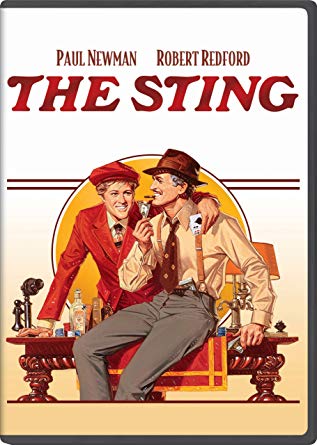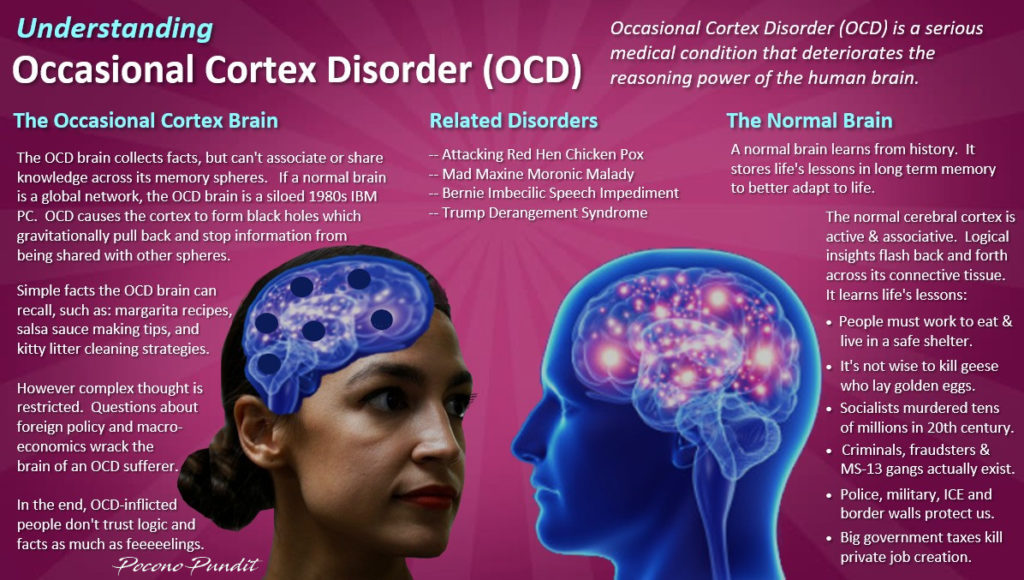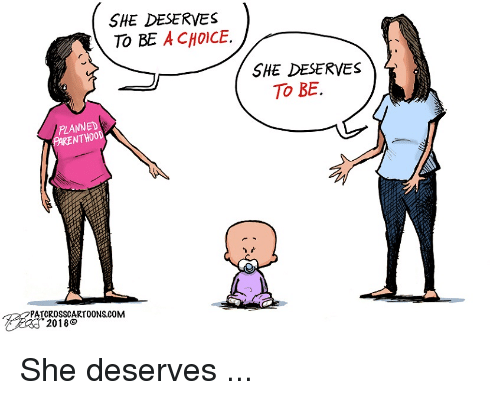
Liars’ Paradise
Remember The Sting? It was a marvelously entertaining 1973 movie about a couple of con artists (played by Robert Redford and Paul Newman) who succeed by creating a substitute reality the mark (Robert Shaw) would believe. A diverse group of co-conspirators helped. Â

Cons work on a macro level, too. It’s not that difficult to wholesale a lie. Bernie Madoff did by persuading investors he was realizing mathematically impossible investment gains. Only there were no investments. He used investor money to pay off other investors. He had everyone believing he had a golden touch. It worked until he ran out of other people’s money. Sort of like socialism, it was all a fairy story.
America has the necessary components: a dedicated minority determined to sell a myth and a larger population mesmerized by promises of a perfect society (and lots of free stuff).
The intellectual classes, ever attracted to socialism, fill the faculties of America’s colleges and universities. Dominant 1960s radicals revised history (subtly at first in K-12,) and all but obliterated it and other courses fundamental to Western civilization; something like a lobotomy, but without the blood.
Exhibit one is Democratic Socialist Alexandria Ocasio-Cortez who represents New York’s 14th District in the US House of Representatives. While expounding on how government ought to be run, AOC (the media’s shorthand) identified the three chambers (sic) of government, the presidency, the Senate and the House.
Attempting to exemplify profligate military funding, Alexandria Occasional-Cortex (a popular and apt meme for which I wish I could take credit) confused the entire Defense Department Budget with a House appropriation.
She also explained that the reason unemployment figures are low is because everyone has two jobs. Unemployment is low because people are working 60, 70, 80 hours a week and can barely feed their families.
The Democrat Leadership put this budding economist on the House Financial Services Committee.

Does she really believe what she says? Is she a co-conspirator or a dupe? In any case, she is good at what she does. She is the darling of the Democrat Party and, judging by the free publicity, of the media as well. According to her biography, OC graduated from Boston University with honors. If accurate, two questions are germane to this inquiry: What did she learn and is she a symptom of a much larger problem?
The larger problem is that the Founders relied upon education to not only diffuse knowledge of the sciences but … implant in the minds of the American youth the principles of virtue and of liberty and inspire them with just and liberal ideas of government… Noah Webster, On the Education of Youth in America But with few exceptions, education is doing the opposite.
This gradual but steady transformation did not go unnoticed. Ten years ago, the American Council of Trustees and Alumni* (ACTA) began to gather data on the 100 colleges featured in the US News and World Annual Report of Best Colleges and Universities. ACTA questioned whether these elite institutions require the rigorous college-level core courses necessary for informed citizenship and a productive life.
The results were dismal—showing that students could bypass essential courses that cultivate critical thinking, logic, writing skills, and mathematics, and revealing that American colleges are often failing to provide a truly collegiate education? If students are not taking college level courses in core subjects, then what are they taking, and more importantly what are they learning?
Now in its tenth year, ACTA’s 2018-2019 What Will They Learn Survey rates over 1100 colleges and universities as to whether rigorous general education courses are required. Nearly 8 million students, more than two thirds of all students in four-year liberal arts schools nationwide are evaluated, including every four-year public university with a stated liberal arts mission as well as hundreds of private colleges and universities selected on the basis of size, mission, and regional representation. All the schools are regionally accredited, nonprofit institutions.
ACTA contends that a clear, but comprehensive set of general education courses outside students’ majors are necessary to provide the skills and knowledge needed to become contributing members of the community and to demonstrate value to future employer. Although other courses may qualify as liberal arts, a core curriculum that fails to require all, or at least most, of the seven key subjects outlined in this report will not prepare students for professional life or educated civic engagement.
The seven subjects identified as essential to a liberal arts education are: Composition, Literature, (intermediate level) Foreign Language, US Government or History, Economics, Mathematics, and Natural science. ACTA delineated the contents of each. A grade is assigned to each institution based on how many of the seven core subjects are required.
The grading system is as follows:
- A — 6-7 subjects required
- B — 4-5 subjects required
- C — 3 subjects required
- D — 2 subjects required
- F — 1 subject required
Overall, the results are troubling.

The survey reveals students are not required to take the college level core subjects necessary to cultivate critical thinking, logic, writing skills and mathematics.
On the whole, higher education has abandoned a coherent content and a rich general education curriculum. Course catalogs and mission statements may exalt the virtues of a â€well rounded” liberal arts education. The reality is that 67.5% of the schools surveyed required three or fewer of the seven core subjects. Their defuse curricula poorly represent critical subjects like American history, economics, and foreign languages.
For example, Rice University in Texas claims that their students will gain an understanding of the literature, art, and philosophy essential to any civilization, a broad historical introduction to thought about human society, and a basic familiarity with the scientific principles underlying physics, chemistry, and mathematics. And yet, Rice students can graduate without taking any What Will They Learn? college-level courses.
University of Michigan: â€Global X: Zombies!†fulfills the “Humanities†requirement
Linfield College: Students can fulfill the US Pluralism or the Individuals, Systems and Society†requirements with The Economics of Star Trek.
De Paul University: History of Comics and Game Design for Non-Majors fulfills the Arts and Literature requirement.
Stockton University: “Vampires: “History of the Undead†fulfills the “Historical Consciousness” requirement.
“U.S. History: The History of Food†and America Through Sport†fulfill the U.S. Government or History requirement at Lindenwold University.
The report advises that neither cost nor reputation is a reliable indicator of core curriculum strength. Students attending US News top-rated liberal arts universities typically pay well over $40,000 a year in tuition and fees. Some of these schools require none of the seven core subjects. The F list includes such august names as Berkeley, Brown and Vassar. Yale does not require students to take college-level math and Brown has an “open curriculum†which means students may take whatever classes they wish, with no core curriculum requirements at all.
ACTA cautions that courses listed under Distribution Requirements, typically allow students to graduate with only a thin and patchy education. Once Distribution Requirements become too loose, students almost inevitably graduate with an odd list of random, unconnected courses and, all too often, serious gaps in their basic skills and knowledge.†For example:
It is possible for students to obtain an excellent education in such schools, but only if classes are chosen wisely. Instead of holding outstanding students to high standards, the “big names†often let students take obscure, esoteric and sometimes lightweight classes in place of a rigorous, coherent liberal arts core.
Because of space limitations this review provides only major findings. However, the ACTA report is important reading for all parents and grandparents of college-age students, and by anyone who thinks, as does this writer, that there must be a concerted citizen effort to reform higher education, for it will never reform itself. Gradually but steadily, its educational mission has been supplanted by an ideological one.
Homogenous: The Political Affiliations of Elite Liberal Arts College Faculty1.
Mitchell Lambert’s study in Academic Questions, a periodical of theNational Association of Scholars (NAS)** provides additional information relevant to this inquiry.
The political registration of full time, PhD-holding professors in top-tier liberal arts colleges is overwhelmingly Democrat. Indeed, faculty political affiliations of 39% of the colleges in my sample are Republican free–having zero Republicans. The political registration in most of the remaining 61%, with a few important exceptions, is slightly more than zero percent, but nevertheless absurdly skewed against Republican affiliation and in favor of democratic affiliation. Thus 78.2% of the academic departments in my sample have either zero Republicans, or so few as to make no difference.
The 8,688 sample from 51 of the 66 top-ranked liberal arts colleges in the US News 2017 report consists of 5,197 or 59 percent, who are registered either Republican or Democrat. The mean Democrat to Republican ratio (D:R) across the sample Is 10.4:1, but because the definition of what constitutes a liberal arts college in the US News Survey included two military colleges, West Point and Annapolis the author included them as well. If these are excluded the D:R ratio is a whopping 12.7:1.
Party Affiliation by Subject and Department
The STEM subjects, such as chemistry, economics, mathematics, and physics, have lower Democrat versus Republican ratios than the social sciences and humanities. The highest Democrat versus Republican ratio of all is for the most ideological field: interdisciplinary studies.
Across departments or fields’ D : R ratios range from 1.6:1 for engineering to 56:0 and 108:0 for communications and interdisciplinary studies. The author could not find a single Republican with an exclusive appointment to fields like gender studies, Africana studies, and Peace studies.
In addition to biased teaching, homogeneity corrupts research and reduces credibility. A familiar example is climate research. Ideologically–motivated academics join the “it’s the biggest problem facing America today,†crowd, rather than examine the flawed assumptions on which that conclusion is based. And not a few characterize scientists who present contradictory evidence as villainous deniers. When flawed research becomes the basis for bad public policy, the outcome can be unfortunate and a prodigious waste of tax dollars. AOC’s ridiculous Green Plan comes to mind.

Diversity is much championed where students are concerned, but not for thoughts or ideas. Langbert concludes that political homogeneity imbedded in institutional culture seems unlikely to be rooted out. His logical, but depressing solution is to establish new colleges from the ground up. Even assuming that can be accomplished, it will not happen quickly. More Occasional Cortexes are in our future.
Campus Discourse and the Silent Track2
If core Liberal Arts subjects are excluded what replaced them? Walter Bruno provides some specifics.
Here are the systems that enjoy hegemony on campus: gender feminism, postcolonial theory, anti-normative sexuality, and neo-Stalinism with race theory folded into the postcolonial binder. Underpinning these are postmodernism and its theories of discourse. With these systems in place, one is empowered to make a priori decisions on whom to listen to and whom not, and who to shield from what might be said. It has nothing to do with reality, which is a cognitive variable anyway. The imprint of Stalinism comes from the fact that class struggle is still used as an analytical filter, and that there are traces of dialectics in postmodern and feminist theory. In the Stalinist mind, the struggle for truth is a military matter, and it ends in domination for winners and silence for losers. As for postcolonial theory, it is a form of identity politics…
Bruno discusses how dissent is silenced.
…In today’s world, to speak is not to construct or mediate an idea it is nearly to mark something that preexists, according to place, history, and identity… Today’s view is that speech is not the communication of thoughts, but an ’act.’ It is better to talk, not about disembodied speech, but a ‘speech act.’ Speaking then becomes ‘enforcing’, and as we all agree, to enforce is not to encourage dialogue…
If all of speech, by definition, is an act, how do you interact? By ‘interfering.’ Interfering describes the posture used to change an unprogressive speech act, a sort of critical subversion. Theoreticians use the phrase ‘interfering in hegemonic discourse,’ which means disabling the flow of understanding…
Talking is not a neutral ground. How you talk is based on who you are: who you are
is a question of your historical ranking in hierarchies. Therefore, there are two classes of speakers: those who talk to exert their (historically authorized) power and those whose ‘speech act’ is to fight against it. It is not the talking that counts but the identity of the speaker…
In the next sentences the author discusses the expanded definitions of ‘Interfering’ and ‘Interrupting’ as a verbal power struggle. For example, interrupting the male-gendered development (of boys) can be timely… every gender will have its wrong-gender developments to interrupt.Â

This writer apologizes for severely testing readers’ patience with the above quotations. Making sense of them is like wading through a swamp in hiking boots. But paraphrasing would not convey the tortured prose or underlying smugness. It all seems ridiculous and ripe for ridicule, but it is deadly serious and diabolical, besides being the antithesis of what education is supposed to be about.
This writer, and I suspect others; tend to blame students’ incivility and bad manners on bad parenting. Similarly, cowardly administrators and lax campus security are at fault when students interrupt speakers or prevent them from speaking. But, as Walter Bruno reveals, it’s part of the curriculum.
Just as complicit administrators facilitate the excuse of being â€offended†to advance censorship of speech with which they disagree, it is all part of the big con. Which is not to deny that bad parenting, spoiled snowflakes, cowardly administrators and lax security may contribute.
And lest anyone think that convoluted prose is confined to the fevered brains of leftist professors, please look up the recently issued American Psychological Association Guidelines For Practitioners Who Treat Boys and Men. Theory and jargon suffuse the guidelines, rehashing the fulminations of radical feminists’ war on men and condemning masculinity as historically predicated on the exclusion of men who were not white, heterosexual, cisgender, able-bodied, and privileged.4. Rather than tax my digestion or that of readers further, those with strong stomachs can read all 21 pages of the Guidelines on the internet. The Guidelines will be in force for at least the next ten years.
Critical Race Theory in Education: Where Farce meets Tragedy
Mark Zunac’s essay3. emphasizes that the noxious emanations from colleges and universities do not stay within vine-covered walls. They are echoed by the media and permeate the culture in a variety of destructive ways.
Zunac is concerned that today’s curriculum makers tend to validate rather than understand those societies and civilizations different for our own. He perceives that today’s cheerleading for diversity (multiculturalism) can only lead to the loss of a common culture. Indeed, he muses that the typical liberal arts curriculum conveys the multiculturalists’ repudiation of the West, a phenomenon distinctly at odds with the transmission of a truly liberal education.
The allegedly noble pursuit of making the Western world a better place is carried out by reviewing how rotten it is. Instilling students with a moralizing certitude regarding knowable and prepackaged truths, from the perspective of the academic left… is doing good.
Zunac posits that hostility to exchanging ideas, now systemic, is not incidental to the rise of political correctness on campus, but essential to and wholly consistent with the primary goals of today’s multicultural university, whose mission to enact change was always designed to have ramifications beyond campus walls.
It should come as no surprise that the tropes employed by today’s ever multiplying victim classes are studied replicas of safe-campus rhetoric in which identity is the highest virtue and emotional serenity dictates the terms of discourse. .
Protected classes– those who presumably benefit from the current regulatory arrangement–seem to be categorized in accordance with their designated level of historical grievance, but also more importantly with their projected sway at the ballot box…
One might question, then, whether protecting students is in fact the motive for the curtailment of speech. Treating students like children prepares them to be children, but it also prepares them for lives unburdened by opposition to their highest ideals. The expectation that students must never endure emotional or intellectual discomfort will not fade when they are handed a diploma….
Zunac concludes with an observation and a warning.
The liberal arts have become political activism handmaiden, and one need not look far for extensions of the campuses’ heavy ideological hand. Nor does one need to be reminded of history’s onward march. It was not long ago that composition purists lamented the affront to clear writing perpetrated by gender–inclusive language. Introducing the “he/she†pronoun conundrum now seems imaginative compared to the imposition of such inanities as ‘ze’ and ‘zher’ into the already torturous realm of academic parlance. The left does not sit idle, even incremental change pays dividends overtime.
As Mark Zunac points out, incremental change is an established strategy of the left. The drive for unrestricted abortion is a timely example. It began over 40 years ago with the claim that the unborn child is only a lump for protoplasm. Fast foreword to 2019: proponents of killing babies who survive abortion now claim it is “part of reproductive health care.†For verification I refer readers to You-Tube and a Planned Parenthood video. To summarize, the video of a beautiful, pink clad, audibly cooing baby girl alternates with short messages on a black screen: She deserves to be loved. She deserves to be wanted. She deserves to be a choice.
WWII newsreels of the sign above the entrance to Auschwitz and other concentration camps read: “Arbeit Macht Frei.†English translation: Work Will Set You Free. It was not persuasive. Captives understood the sign was a cynical joke. It was, perhaps, a singularly wicked application of Orwellian double speak —– until Planned Parenthood’s She deserves to be a choice. Translation: She deserves to be killed. Â

Perhaps politically motivated lies on campus, echoed by the media, are so successful that truth, even when presented in Technicolor, is unrecognized.
Recap
It was not this writer’s intention to ridicule Alexandra Ocasio-Cortez for the sake of ridicule. (Though I admit it was fun.) My intent was to write an introduction that would convey the seriousness of the problem.
When attempting to explain away her factual errors (in addition to those previously cited in this review) AOC complained: There’s a lot of people more concerned about being precisely, factually, and semantically correct than about being morally right. Facts are unimportant as long as the goal is “moral.â€
Or in a more familiar rendering: “The end justifies the means.†In other words, if a goal is important enough, any method of getting it is acceptable. Lenin and Stalin adopted it to justify a large assortment of murderous acts.Â

Clearly, the big con works on many levels.
The Third Annual Report of Attitudes Toward Socialism by You-Gov (2018) found that 52% of the millennial generation indicated that they would prefer to live in a socialist (46%) or communist (6%) country than a capitalist (40%) one. Further questioning revealed that when Americans—especially the millennial cohort—think of socialism, they primarily think of Western European democracies, income equality, and access to healthcare. They do not associate socialism with communism and authoritarianism. Other surveys report similar results regarding a growing attachment to socialism.
As reported in The WSJ, February 17, 2019: U.S. colleges and universities brought in a record 46.7 billion in donations last fiscal year. Although the top 10 schools by total donations represent less than 1% of all colleges and universities, these schools raised 18% of all funds last year. Seven schools received gifts of at least $100 million in fiscal 2018.
“The Gods Must Be Crazy.â€
References
Mitchell Langbert, associate professor of business management at Brooklyn College, New York. Summer 2018, Vol 31, No 2
Walter Bruno retired from teaching in 2010. Winter 2016,volume 29, No 4
Mark Zunac, associate professor of English at the University of Wisconsin Whitewater, Wisconsin. Ibid
Is Self-Reliance a Mental Illness? Crispin Sartwell, teacher of philosophy at Dickinson College, Carlisle, Pa. WSJ February 8, 2019
*American Council of Trustees and Alumni (ACTA) is an independent, non-profit organization committed to liberal arts education, academic freedom, excellence and accountability at American colleges and universities. Founded in 1995, it works with alumni, donors, trustees and education leaders to support liberal arts education, uphold high academic standards, and safeguard the free exchange of ideas on campus. In addition it works with the above groups to make such education affordable.
The good news is that some state legislatures are responding by requiring public universities to create strong requirements for the study of American history and government. The initiatives undertaken by regents and trustees are also enumerated in the What Will They Learn Report. https://www.goacta.org/publications/what-will-they-learn-2018-19-survey-on-core-requirements. Additional reports can be found on https://www.goacta.org/
** The National Association of Scholars (NAS) is a non-profit organization dedicated to strengthening the integrity of scholarship and teaching. The standards of a liberal arts education that the NAS upholds include reasoned scholarship and civil debate in America’s colleges and universities; and individual merit in academic and scholarly endeavor. We expect that ideas be judged on their merits; that scholars engage in the disinterested pursuit of the truth; and that colleges and universities provide for fair and judicial examination of contending views.
Additional Reports sponsored by NAS can be found on https://www.nas.org/about/overview
Warning: Plug
ACTA and NAS work diligently to restore the integrity of American Education.
Contributions from those who share that commitment are appreciated.
 The posts are coming!
The posts are coming!

0 comments
Kick things off by filling out the form below.
Leave a Comment